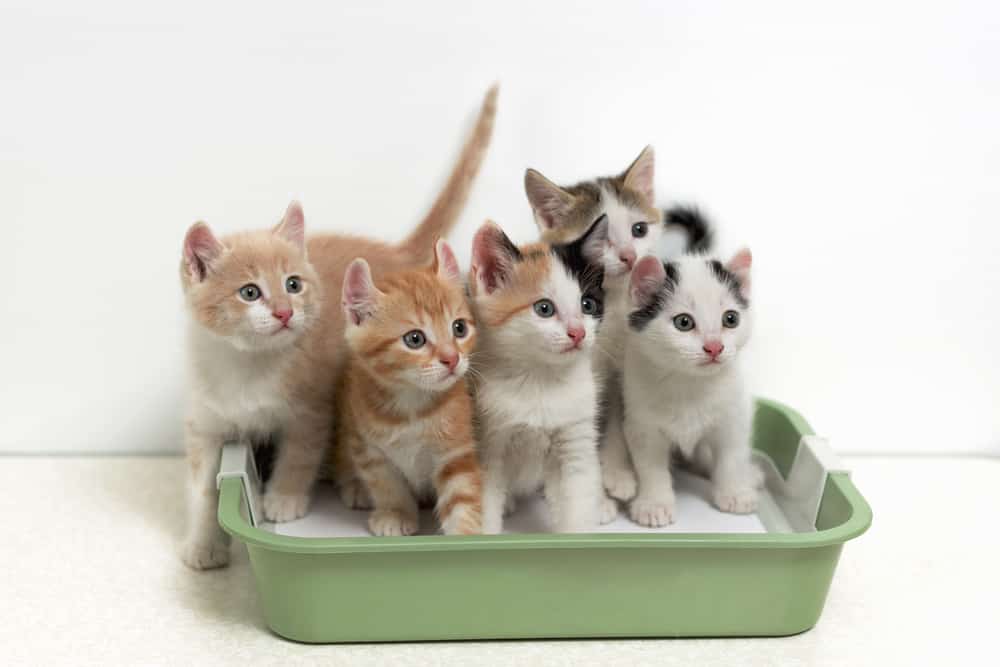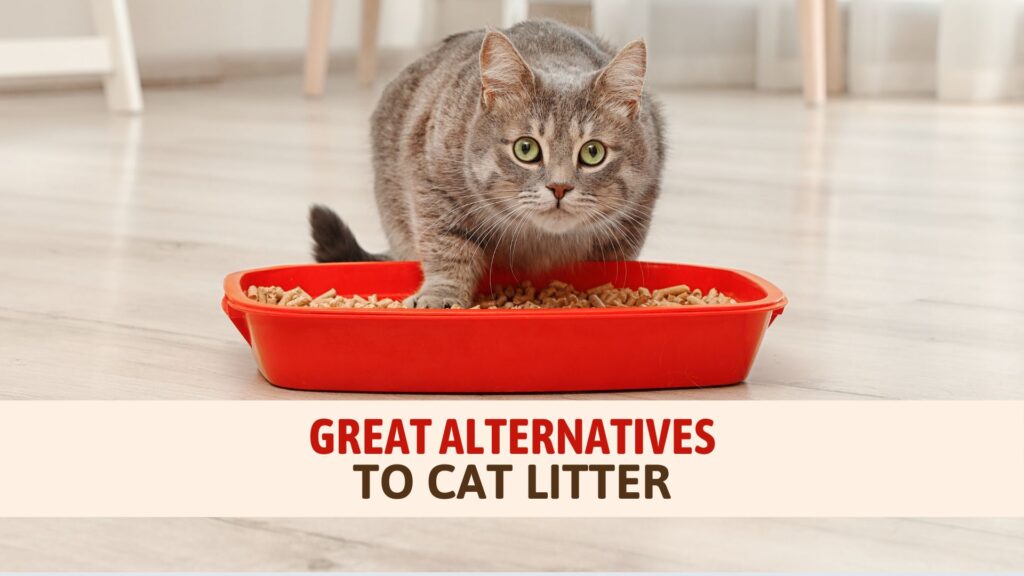Most cat parents are going to be interested in anything that has the potential to reduce litter box smells.
Unfortunately, that can also lead to a lot of techniques don't work, or as in the case of adding essential oils to the litter box could even be dangerous for cats.
But is it a totally lost cause or is there anything that can help improve litter box smells? What about something like activated charcoal, also known as activated carbon…can you add charcoal to cat litter?
Activated charcoal or carbon can help reduce litter box smells by neutralizing odors but be sure to stick with cat-approved products any time you add something to the litter box. You can also use charcoal filters on covered boxes, litter with charcoal in it, or a carbon filter near the box to get similar benefits.
Before we take a closer look at this topic, it's worth mentioning that activated carbon and activated charcoal are the same things and there's no difference between them. As you explore this topic, you'll see these terms used interchangeably.
Now let's get started with everything you need to know about fighting litter box smells with activated carbon or charcoal!
Is Activated Charcoal Safe For Cats?
Activated charcoal comes in several different forms from standalone filters to litter and additives. Most of these products are considered cat safe. In fact, there are many products that are specifically made for cats and I wouldn't suggest using any product that isn't approved for our feline friends.
From a veterinary perspective, charcoal can be used in both humans and cats to absorbs toxins but it's not without its risks. However, the risks of activated charcoal come from ingesting large doses in the process of combating toxicity. It's unlikely that your cat will eat enough litter to cause charcoal toxicity problems and if your cat is eating that much litter then there are likely bigger issues at play.
While you can use activated charcoal in a mostly raw form next to the litter box in a dish, that should be your last choice since that form can be sooty and easily spread black paw prints if your cat just can't resist batting at it or knocking it over.
So in general, activated charcoal filters, litter, and litter additives are considered safe for cats but make sure to stick with cat-specific or pet-approved products to further reduce any risk.
How Does Activated Charcoal Absorb Litter Box Odors?
Charcoal is “activated” by heating it to a massive 900 °C (1,700 °F). The heating process not only removes existing impurities from the charcoal but also gives the surface thousands of small pores which increase the surface area and improve its ability to absorb a huge range of impurities.
It's hard to underestimate just how much this can increase the surface area of charcoal and according to some sources, a teaspoon of activated charcoal or carbon has the area of an entire football field. Activated charcoal is used to treat toxicities of all kinds, filter water, absorb volatile organic compounds in the manufacturing process, and of course, soak in the stinky scent of the litter box.
It does this by trapping problematic molecules causing odor or toxicity within these numerous pores. Because of this, activated charcoal can “fill up” which is why activated charcoal filters and litter additives will need to be regularly replaced
How Can You Use Activated Charcoal To Manage Litter Box Smells?
Now that you know how this powerful compound works, let's look at how you can put it to use in your home.
Use A Litter Box With A Filter
There are dozens of litter boxes that come ready to go with a filter of some kind. These aren't always activated charcoal-based but you can easily replace them with one that is. You can check out one of our favorite litter boxes with a filter at the top of our list of the best litter boxes for a small apartment (it's first on the list).
But that's far from your only option and you can make an activated carbon filter work with almost any front entry covered litter box. Many brands will have their own technology attached but if you pick up a simple, cat-friendly filter like this one Amazon you can easily attach it to the top of the box or a similar vent to filter airflow.
Make Your Own Filter
If you're more of a DIY'er, then you could try to make your own activated carbon filter but it's honestly not worth the hassle. Heck, you can even make your own activated charcoal by completing the heating process at home but again that's rarely worth the effort with so many easy options available.
Use A Cat Litter With Activated Charcoal
These days, you can find a cat litter with just about anything in it! From wood pellet cat litter (one of my favorites) to recycled newspaper and grass there's no limit to what your cat can poop on!
So it should be no surprise that you can find cat litter with activated charcoal already in it and even though there isn't a huge range of options there are still plenty. Which one you go with depends on your preferences (and your cat's) but this clumping cat litter from Tidy Cats is a good starting point if you want to work in some activated charcoal. It's your standard clumping litter with bits of cat-safe activated charcoal mixed in. It also has more than 12,500 five-star reviews on Amazon which is certainly a bit above the standard.
See Also: Can You Mix Two Different Cat Litters?
Use An Activated Charcoal Litter Additive
If you don't want to completely switch your cat's litter, which can be quite a hassle, you can consider adding a litter-specific additive to your cat's box.
There aren't a ton of these products on the market but my favorite out of the available options is from the folks at Sapphire Labs which you can check out on Amazon by clicking here. You simply work this product into your normal litter rotation and call it a day!
Again, if you do add anything to your cat's litter make sure that it's feline specific in order to keep your cat safe.
Use A Filter Nearby
You can also opt for a charcoal filter that's strategically placed near the litter box. Many of these will not only help manage odor but can also improve overall air quality too.
There's a massive range of options in the world of air filters but if you're not sure where to start I recommend this reasonably priced tower that will not only filter the air near the box but several hundred square feet around it as well.
Add Activated Charcoal Nearby
This is the least desirable option not only because it's the most non-specific but it also has the greatest potential for making a mess! You could add some charcoal to the area around your cat's litter box and simply let the charcoal do its thing.
Some folks simply suggest putting it into a bowl, which can work, but if you ever spill it you'll be dealing with quite a mess as you clean up a black sooty mess. The more likely outcome is that your cat decides to flip the bowl (unless you put it in something heavy enough to not be flipped) and you'll still have a mess on your hands but this time with little black paw prints to go with it!
So I'd suggest skipping this approach for one of the other options above.
Closing Thoughts
Not only is activated charcoal safe for our feline friends in most cases, but it also does an exceptional job of managing litter box smells.
This stuff is used for some major problems and often on an industrial scale. While it might feel like your cat is producing industrial-grade poops (which sounds pretty serious) even if that were the case activated charcoal is ready for the challenge.
You have several options for quickly working in activated charcoal from a simple filter on a covered box or the addition of a litter additive. You also have some more committed options like changing the litter or investing in a free-standing air filter.
But whatever you do, using charcoal is usually worth the hassle and you can read dozens of reviews across the internet from happy cat owners who are now enjoying a less stinky litter box. Just make sure you play it safe by using cat-specific products any time you add anything on or in the litter box.
What do you think? Are you going to work in some activated charcoal to your litter box protocol?
Read Next:





